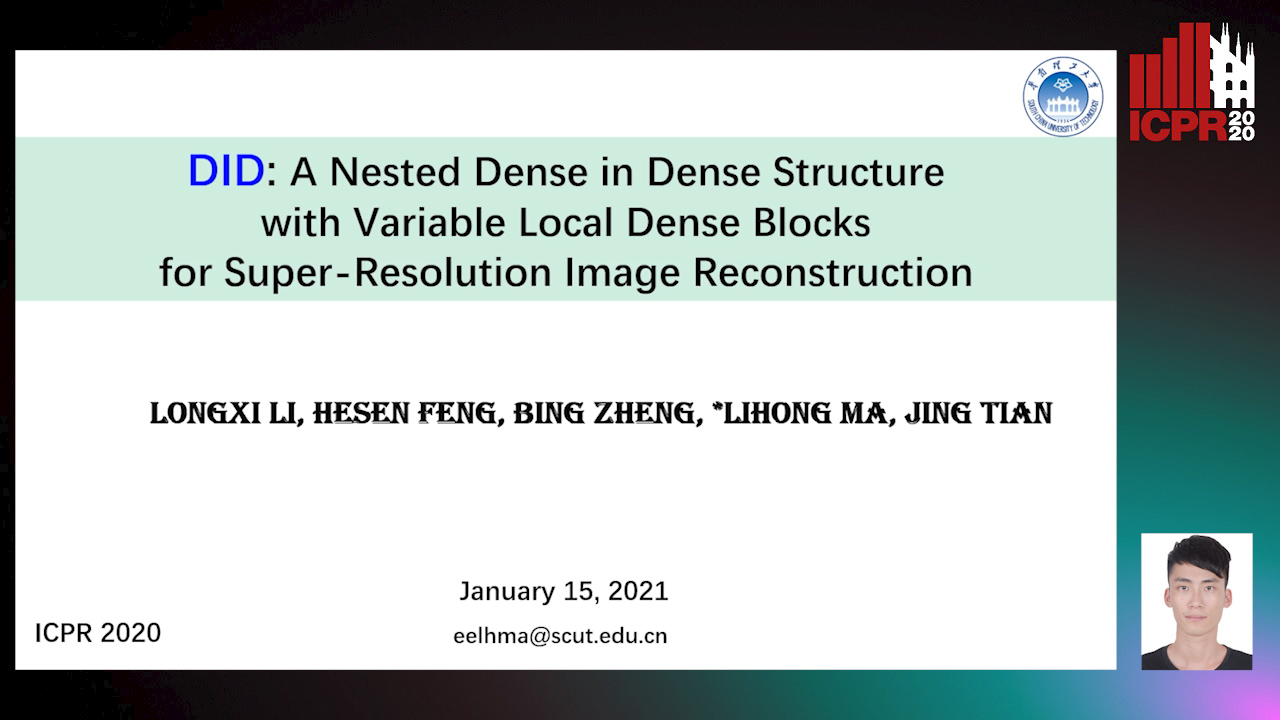Hesen Feng
Paper download is intended for registered attendees only, and is
subjected to the IEEE Copyright Policy. Any other use is strongly forbidden.
Papers from this author
DID: A Nested Dense in Dense Structure with Variable Local Dense Blocks for Super-Resolution Image Reconstruction
Longxi Li, Hesen Feng, Bing Zheng, Lihong Ma, Jing Tian

Auto-TLDR; DID: Deep Super-Residual Dense Network for Image Super-resolution Reconstruction
Abstract Slides Poster Similar
The success of single image super-resolution reconstruction (SR) relies on a refined mapping from low-resolution (LR) examples to high-resolution (HR) signals. However, the relation is sometimes chaos, especially in a deep SR network. We try to improve the mapping interpretability in two folds: i) The variable local dense blocks (VLDB) are suggested to match receptive fields in different depths of a residual dense network (RDN), with each VLDB a dyadic increment of layer numbers than its predecessor. ii) Based on VLDBs, a dense in dense (DID) network is created. It substitutes nodes in a regular RDN with super nodes, i.e. VLDBs; and formulates a joint learning by flexible hierarchical feature scaling, reusing and long-short term aggregating. VLDBs deal with feature underfitting occurred when a big receptive field meets a fixed-depth dense block, and the DID network provides a relative complete feature dictionary to preserve details for feature shift, dilating and grouping in high dimension image reconstruction. To demonstrate the validness of DID structure, detail experiments are performed on the benchmark datasets Set5, Set14, B100 and Urban100, where the accuracy PSNR and the visual perceptive SSIM are superior to most state-of-the-art methods. Besides, due to the depth adaption of VLDBs and its nesting in generalized RDN,DID network is converged easily and gradient explosion or disappearance are alleviated even when network deepens.